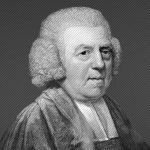This article is part 11 in a series by Tom Nettles on Remembering Jesus Christ. (Part 1, Part 2, Part 3, Part 4, Part 5, Part 6, Part 7, Part 8, Part 9, Part 10).
When John summarized the narrative of his gospel (20:31), he acknowledged a strategic selectivity to the signs performed by Jesus. His purpose was “that you may believe that Jesus is the Christ, the Son of God; and that by believing you may have life in His name.” In fact, not just the signs, but all that John recorded compels the reader to a confession that Jesus is Lord and God (John 20:28, 29), peculiarly qualified to effect salvation for those whom the Father had given him (John 6:39). He gives the historically observable evidence for the theological conclusion, “In the beginning was the Word, and the Word was with God, and the Word was God. … And the Word was made flesh and dwelt among us, and we beheld his glory” (John 1:1, 14).
The “signs”—seven of them recorded by John—are works of Jesus that required omnipotent power and benevolent purpose. For those who saw them and understood, they should conclude that God is with us and is working for our well-being. Jesus changed water into wine to salvage a wedding celebration (John 2:1-11). At that, his disciples believed. He healed an official’s son with a spoken word from afar (4:46-54). At that, he and his household believed. He healed a man who had been an invalid for almost forty years by telling him, “Take up your bed and walk” (5:1-15). At that the Jews reviled him, and Jesus called God his Father, “making himself equal with God.” The opposing Jews, understanding the implications of the Father/Son reference, began their contrivances to kill him. He fed a multitude of 5000 men plus women and children by multiplying five loaves of bread and two fish to satisfy the hunger of all (6:5-13). At that, the people said, “This is indeed the prophet who is to come into the world.” In the presence of weather-beaten, frightened disciples he walked through a stormy sea to comfort them and quiet the storm (6:16-21). At that, those in the boat worshipped him and said, “Truly, you are the Son of God” (Matthew 14:33). For a man born blind, with the use of mud made from Jesus’ saliva and water for washing, Jesus restored his sight, prompting the man’s worship (John 9). Jesus’ friend Lazarus, dead for four days, he raised from the dead by calling him forth by command. Beforehand, he prayed showing that the purpose of this astounding sign was that those standing around would “believe that You sent Me.” He wanted to make sure that observers knew that he operated in perfect conjunction with the power and purpose of the Father (John 11:1-44). At that, “many of the Jews believed in him.” When Jesus assured Martha that Lazarus would be raised, she confessed, “Yes Lord; I have believed that You are the Christ, the Son of God, even He who comes into the world” (11:27). These signs identified Jesus as the one who told Moses, “I will do marvels such as have not been done in all the earth, nor in any nation” (Exodus 34:10).
He also records seven times that Jesus stated metaphors using the ontological identity for God, “I am.” In doing so he sets himself forth as the one in whom safety, life, sustenance, and eternity is secured. Jesus said, “I am the bread of life, …the light of the world, … the door of the sheep, … the good shepherd, …the resurrection and the life, … the way, the truth, and the life, … the true vine” (John 6:35, 48, 51; 8:12, 9:5; 10:7, 9: 10:11, 14; 11:25; 14:6; 15:1). John records Jesus’ use of “I am” without any metaphorical reference on five occasions (6:20; 8:24, 28, 58; 18:5). Both the metaphorical and absolute use of “I am” identify Jesus as the God who created all that is in the world and by whose word light was separated from the darkness. He is the one who protected and fed Israel in the wilderness and the true David, the killer of giant death and the eternally reigning king. As the vine, he embodies Israel, the true man of God. As the Good Shepherd, He is the gate through whom they enter the fold, He calls them by name, and He dies for them in order to secure eternal life for them. He is the ransom and the Redeemer for Job by whose power believers will in their flesh see God (Job 19:25-27; 33:24, 25). His Person and Work exclude the possibility of any other person, philosophy, or religious system leading to a knowledge of the Father, but ascertain that his way is infallibly certain.
As the Good Shepherd, Jesus is the gate through whom they enter the fold, He calls them by name, and He dies for them in order to secure eternal life for them.
Jesus identifies himself with no equivocation, no embarrassment, no apology, no mollifying explanation as the one who identified himself to Moses as “I am” (Exodus 3:14). What astounding connections must have trammeled the pedestrian thoughts of the people as one stood among them who identified himself to Moses by that name—”I am that I am; I eternally exist; I am unchangeable; I alone have non-dependent existence; it is to me that all moral beings, of all times, from all places will answer in final judgment.” His claim meant that he was, therefore, “The Lord, the Lord God, merciful and gracious, longsuffering, and abounding in goodness and truth, keeping mercy for thousands, forgiving iniquity and transgression and sin, by no means clearing the guilty, visiting the iniquity of the fathers upon the children and the children’s children to the third and the fourth generation” (Exodus 34:6, 7).
Jesus told his detractors, “Do not think that I will accuse you before the Father; the one who accuses you is Moses, in whom you have set your hope. For if you believed Moses, you would believe Me, for he wrote about Me. But if you do not believe his writings, how will you believe My words?” (John 5:45-47). Moses wrote about the Creator, the Righteous Judge, the Covenant Maker, the God of Abraham, the God of Deliverance, the Great Lawgiver, the angry God, the compassionate God, the God who reveals his glory, the God whose justice cannot be violated, the God who makes a way of forgiveness. Jesus said, “I am that God.”
The discourses recorded by John give Jesus’ interpretation of confrontations of varying intensities with increasingly bold claims. In his discussion with Nicodemus, Jesus calls himself the Son of Man “who descended from heaven” and gives eternal life to believers (John 4:13, 15). To the woman of Samaria, Jesus told her plainly concerning the identity of Messiah, “I who speak to you am” (John 4:26). In a discourse with hostile Jews, Jesus enraged them even further by saying that the Father has committed all judgment to the Son “so that all will honor the Son even as they honor the Father. He who does not honor the Son does not honor the Father who sent Him” (John 5:23). In speaking in strong images about the necessity of his incarnation and death, Jesus again offended the grumblers by saying, “Truly, truly I say to you, unless you eat the flesh of the Son of man and drink his blood, you have no life in yourselves” (John 6:53). In another discussion with the confused and increasingly agitated Jews, Jesus laid claim to a perfect knowledge of and conformity to the Father’s purpose: “When you lift up the Son of Man, then you will know that I am, and I do nothing on my own initiative, but I speak those things as the Father taught me. And He who sent me is with me; He has not left me alone, for I always do the things that are pleasing to him” (8:28, 29). In his Good Shepherd discourse Jesus said, “My Father, who has given them to me, is greater than all; and no one is able to snatch them out of the Father’s hand. I and the Father are one” (10:29, 30). When that claim prompted an effort to stone him immediately, he pointed to their irrationality in disconnecting his words from his works, and continued, “Though you do not believe me, believe the works, so that you may know and understand that the Father is in me, and I in the Father” (10:38). Identity in deity while maintaining distinction of personhood was too big an idea to absorb but was perfectly consistent with the witness of the Old Testament. In the discourse given at the Lord’s Supper, Jesus made several summarizing statements, “You call me Teacher and Lord; and you are right, for so I am; … he who receives Me, receives Him who sent Me. … Now is the Son of Man glorified, and God is glorified in Him; … I am in the Father and the Father is in Me; … He who hates me hates my Father also; … He [the Holy Spirit] will glorify Me, for He will take of Mine and will disclose it to you. All things the Father has are mine; … Blessed are they who did not see, and yet believed [that I am Lord and God]” (13: 13, 20, 31; 14:10, 11; 15:23; 16:14, 15; 20:29).
John saw and heard these things, testified to these things, and wrote these things. He remembered Jesus Christ and under the superintending purpose of the Holy Spirit recorded with the same revelatory value and infallible authority with which Paul preached his gospel.
This article is part 11 in a series by Tom Nettles on Remembering Jesus Christ.
Join us at the 2024 National Founders Conference on January 18-20 as we consider what it means to “Remember Jesus Christ” under the teaching of Tom Ascol, Joel Beeke, Costi Hinn, Phil Johnson, Conrad Mbewe and Travis Allen.






















